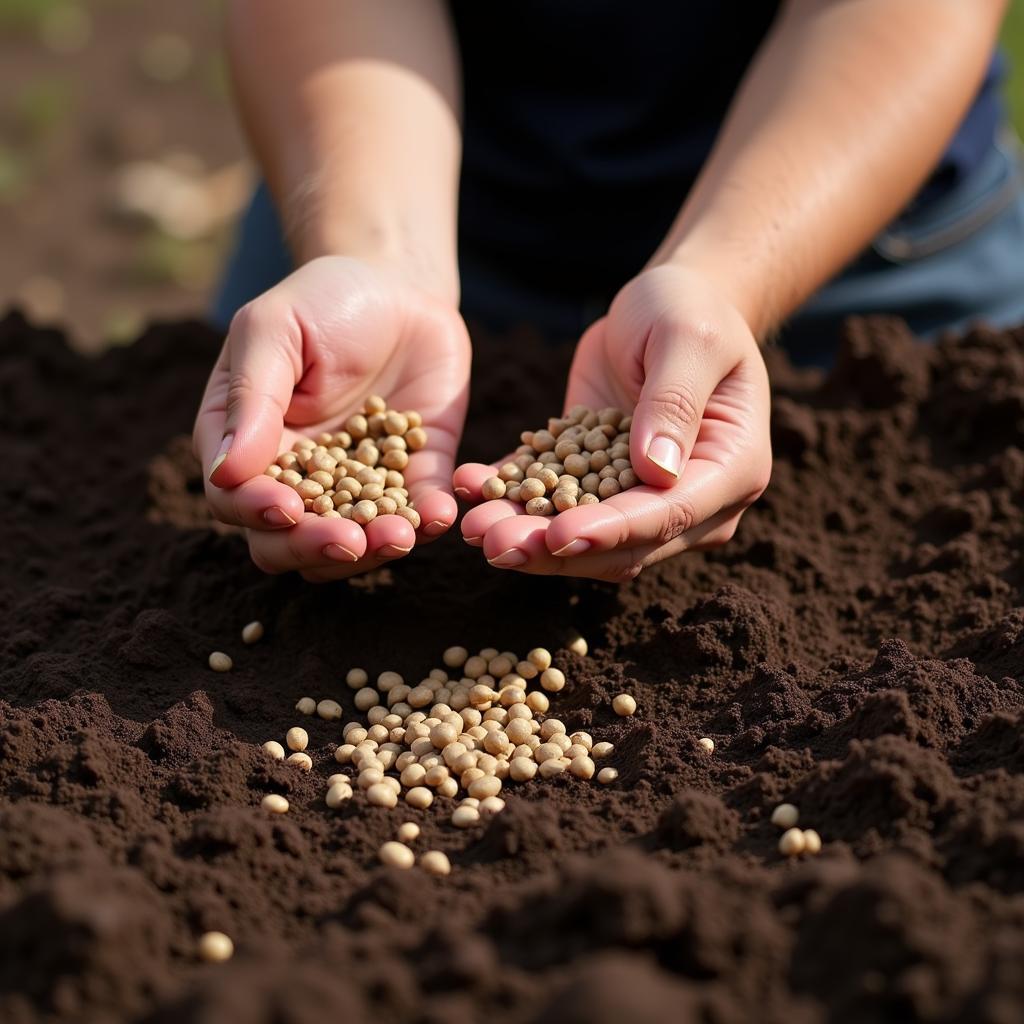Food Plot Radish Seed is a popular choice for hunters and wildlife enthusiasts looking to create nutritious and attractive food sources for deer and other animals. This guide will explore the benefits, planting techniques, and best practices for successful radish food plots. We’ll cover everything from choosing the right seed to maintaining your plot throughout the season.
Why Choose Radish for Your Food Plot?
Radishes are a brassica, known for their fast growth and high nutritional value. They’re an excellent choice for both fall and spring food plots, providing a valuable forage source when other food options may be scarce. Their large, leafy tops offer excellent browse for deer, while the bulbs themselves are a tasty treat packed with energy and nutrients. Food plot radish seed is relatively inexpensive and easy to establish, making it a budget-friendly option for landowners. Besides providing deer with essential vitamins and minerals, radish food plots also help improve soil health. They’re known for their ability to break up compacted soil, increasing aeration and water infiltration. radish food plot seed is a wise investment for hunters seeking to improve their land and attract wildlife.
Benefits of Planting Radish:
- Fast growth: Radishes establish quickly, making them ideal for late summer or early fall plantings.
- High nutritional value: They provide essential vitamins and minerals for deer and other wildlife.
- Attractive forage: Both the leafy tops and bulbs are palatable to deer.
- Improves soil health: Radishes help break up compacted soil and improve aeration.
- Cost-effective: Radish seed is a relatively inexpensive food plot option.
Planting Your Radish Food Plot: A Step-by-Step Guide
Preparing your soil properly is crucial for a successful radish food plot. Before planting, conduct a soil test to determine the pH and nutrient levels. Radishes prefer a slightly acidic soil with a pH between 6.0 and 7.0. Amend the soil as needed with lime or fertilizer. Next, clear the area of any existing vegetation and till the soil to create a loose seedbed.
Planting Techniques:
- Broadcasting: Scatter the seed evenly over the prepared area.
- Drilling: Use a seed drill for more precise planting and better seed-to-soil contact.
- Cultipacking: After seeding, lightly cultipack the soil to ensure good seed-to-soil contact.
 Planting radish seeds in a food plot
Planting radish seeds in a food plot
When to Plant:
- Fall: Plant in late summer or early fall for a fall and winter food source.
- Spring: Plant in early spring for a quick-growing spring forage.
Maintaining Your Radish Food Plot
Once your radish plot is established, minimal maintenance is required. Ensure adequate moisture during the initial growth stages, especially during dry periods. Monitor for weeds and control them as needed. springtime food plots often include radishes.
Tips for Success:
- Choose a sunny location with well-drained soil.
- Consider using a soil inoculant to promote healthy root development.
- Protect your plot from browsing pressure until the radishes have established a strong root system.
Frequently Asked Questions (FAQs)
-
What kind of radish is best for a food plot? Daikon radish and forage radish varieties are popular choices.
-
How much radish seed do I need per acre? Generally, 8-10 pounds of seed per acre is recommended.
-
Can I plant radish with other food plot species? Yes, radish can be mixed with other brassicas, clovers, or grains.
-
When will deer start using my radish plot? Deer will typically begin browsing the leafy tops soon after germination, and the bulbs will be attractive throughout the fall and winter.
-
How long will a radish food plot last? Radishes are typically an annual crop, providing forage until the first hard frost.
Radish Food Plots: A Wildlife Magnet
Food plot radish seed provides an excellent way to enhance your property for wildlife. The rapid growth, nutritional value, and soil-improving qualities make radish an ideal choice for both experienced and novice food plotters. good food plot for deer often include radishes. By following these tips, you can create a thriving food plot that will attract and nourish deer and other wildlife for years to come.
Considering Other Options?
Want to attract even more wildlife? Check out our guide on the best food plot for deer and turkey. Interested in learning more about brassicas? Explore our article on brassica food plots deer.
For further assistance, please contact us at Phone Number: 02437655121, Email: minacones@gmail.com or visit our address: 3PGH+8R9, ĐT70A, thôn Trung, Bắc Từ Liêm, Hà Nội, Việt Nam. We have a 24/7 customer service team.